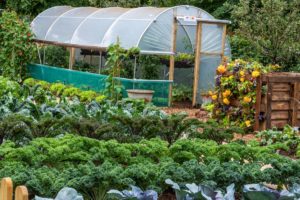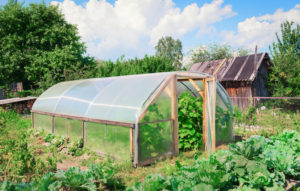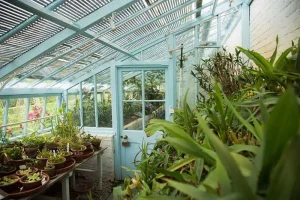Permaculture design has become increasingly popular in recent years as people seek more sustainable and self-sufficient living solutions.
This beginner’s guide provides a comprehensive overview of permaculture principles and techniques, making it easier for individuals to start their own off-grid journey and transition into a self-reliant lifestyle.
By embracing the wisdom of nature and using natural systems as a model for our designs, we can create a thriving and regenerative future for ourselves and generations to come.
So join us on this exciting adventure and let’s dive into the world of permaculture design!
Start small
Begin with a small area of your yard or property and gradually expand your permaculture design as you gain more experience and confidence.
This approach allows you to test and refine your designs, techniques, and systems without investing a large amount of time and resources.
By starting with a small area, you can experiment with different plants, soil preparation methods, and water harvesting systems, and observe how they perform in your specific climate and micro-ecosystem.
This process allows you to gather valuable data and insights that you can use to improve and expand your permaculture design over time.
Moreover, starting small also helps you to build confidence and develop a sense of self-sufficiency.
You can start by cultivating a few plants, such as vegetables, fruits, and herbs, and gradually expand your range to include more complex systems, like composting, mulching, and irrigation.
As you gain more experience and success, you can incrementally increase the size of your permaculture design, allowing you to enjoy a greater variety of plants and products while also improving the overall health and resilience of your ecosystem.
Incorporating off-grid gardening practices into your permaculture design is an excellent way to ensure food security and self-sufficiency while reducing your carbon footprint and reliance on external resources.
By starting small and gradually expanding your design, you can create a thriving and sustainable ecosystem that provides a bounty of fresh, healthy food while also protecting the environment and your wallet.
Observe and interact
Study the natural patterns and rhythms of your local ecosystem, including the weather, soil, plants, and animals. This will help you design a permaculture system that is tailored to your specific climate and region.
Observing and interacting with the natural world is a important step in designing a successful off-grid gardening system.
By studying the local ecosystem, including the weather patterns, soil composition, and native plants and animals, you can gain valuable insights into how to create a sustainable and productive permaculture system that is specifically tailored to your region.
For example, you may observe that your area has a specific type of soil that is well-suited to growing certain types of crops, or you may notice that certain plants thrive in the local climate.
By interacting with the ecosystem, you can also learn about the rhythms and patterns of the natural world, such as the best times of day for planting and harvesting, or the optimal temperatures and moisture levels for different crops.
This information can be used to create a permaculture system that is optimized for your specific climate and region, resulting in a more productive and resilient garden.
Off-grid gardening allows you to connect with nature and rely on the natural processes of the ecosystem to grow your food, making it a sustainable and rewarding way to live.
Plan your zone scheme
Divide your property into different zones based on how frequently you need to access them. For example, your highest-use areas, like your kitchen garden, might be in zone 1, while your lowest-use areas, like your wilderness area, might be in zone 5.
To ensure the success of your off-grid garden, it’s essential to plan your zone scheme carefully.
This involves dividing your property into different zones based on how frequently you need to access them.
For example, your highest-use areas, like your kitchen garden, might be in zone 1, which is easily accessible and close to your home.
This zone might include vegetables like tomatoes, peppers, and herbs that you use frequently in your cooking.
On the other hand, your lowest-use areas, like your wilderness area, might be in zone 5, which is farther away from your home and requires more effort to maintain.
This zone might include plants like fruit trees, berry bushes, and perennial vegetables that require less maintenance and can thrive with less frequent access.
By dividing your property into these different zones, you can optimize your time and resources, ensure that each plant is receiving the appropriate amount of care, and create a more sustainable and efficient off-grid garden.
Off-grid gardening allows you to disconnect from the hustle and bustle of daily life and connect with nature, giving you a sense of peace and fulfillment.
Mulch and compost
Mulching and composting are key techniques for creating healthy soil and reducing waste. Use organic materials like wood chips, straw, and leaves to mulch your beds, and create compost piles using kitchen scraps and other organic materials.
Mulching and composting are essential techniques for creating healthy soil and reducing waste in off-grid gardening.
Mulching involves covering the soil with a layer of organic materials like wood chips, straw, or leaves to retain moisture, suppress weeds, and regulate soil temperature.
By using organic mulch, you can improve the soil’s structure, increase its water retention capacity, and promote healthy microbial activity.
Composting, on the other hand, involves breaking down kitchen scraps and other organic materials into a nutrient-rich soil amendment.
By creating compost piles using a mix of green (nitrogen-rich) and brown (carbon-rich) materials, you can produce a fertile, humus-like substance that enhances soil health, improves plant growth, and reduces your waste output.
Off-grid gardeners can use mulch and compost to create a self-sustaining ecosystem that minimizes reliance on external resources.
By incorporating these techniques into their gardening practices, they can reduce their carbon footprint, increase their food security, and promote ecological resilience.
Mulching and composting can be done using locally available materials, reducing the need for imported fertilizers, pesticides, and other chemicals that can harm the environment.
By embracing these sustainable practices, off-grid gardeners can contribute to a healthier, more resilient food system that benefits both people and the planet.
Use perennial plants
Perennial plants like berry bushes, asparagus, and fruit trees can provide a steady source of food and beauty, while also reducing the need for tilling and other maintenance.
When it comes to off grid gardening, using perennial plants is a wise and sustainable choice.
Perennial plants like berry bushes, asparagus, and fruit trees can provide a steady source of food and beauty, while also reducing the need for tilling and other maintenance.
These plants come back year after year, requiring only occasional pruning and care, making them ideal for busy off grid gardeners who want to maximize their harvest with minimal effort.
Berry bushes, for example, can produce delicious fruit for months at a time, while asparagus can provide a bountiful harvest in just a few weeks.
And by planting fruit trees, you’ll have a continuous supply of fresh, healthy produce for years to come.
Plus, perennial plants tend to be more drought-tolerant and pest-resistant than annual plants, making them a great choice for off grid gardeners who may face challenges such as limited water availability and pests.
By incorporating perennial plants into your garden, you’ll not only save time and effort, but also enjoy a more diverse and thriving garden.
Build a trellis
Trellises can help you grow more plants in a smaller space, while also adding beauty and functionality to your landscape. Consider using natural materials like branches and twine to create a trellis.
Building a trellis is an excellent way to maximize your gardening space and add a touch of elegance to your outdoor landscape.
Trellises allow you to grow more plants in a smaller area, making the most of your available space.
By using natural materials like branches and twine, you can create a sturdy and visually appealing structure that will support your plants as they grow.
The trellis will not only provide support for your plants but also add a decorative element to your garden, creating a focal point and enhancing the overall aesthetic of your outdoor space.
Off-grid gardening is a great way to live more sustainably and self-sufficiently, and building a trellis is an essential component of this type of gardening.
With a trellis, you can grow more of your own food using limited space and resources, reducing your carbon footprint and reliance on external sources.
By using natural materials for your trellis, you can create a fully sustainable and eco-friendly gardening solution.
Building a trellis is an excellent way to optimize your gardening space, add beauty and functionality to your landscape, and live more sustainably through off-grid gardening.
By using natural materials and focusing on self-sufficiency, you can create a fully sustainable and eco-friendly gardening solution that will support your plants and enhance your outdoor space for years to come.
Collect rainwater
By installing a rainwater harvesting system, you can collect and store water for irrigating your permaculture garden, while also reducing your reliance on municipal water supplies.
Collecting rainwater is an excellent way to irrigate your permaculture garden while reducing your reliance on municipal water supplies.
By installing a rainwater harvesting system, you can capture and store rainwater that would otherwise be lost to runoff or absorbed by the ground.
This collected water can then be used to water your plants, fruit trees, and vegetables, providing them with the necessary moisture to grow and thrive.
By using rainwater instead of municipal water, you can significantly reduce your water bill and lower your carbon footprint.
Furthermore, collecting rainwater can also help to mitigate the risk of drought, as you can rely on this natural resource during periods of low rainfall.
Off-grid gardeners can also consider installing a graywater system, which can reuse water from sinks, showers, and washing machines for irrigation purposes.
By incorporating these water-saving strategies into your permaculture garden, you can create a sustainable and self-sufficient oasis that produces healthy and delicious food while minimizing your impact on the environment.
Embrace diversity
Permaculture is all about creating a diverse and interconnected ecosystem. Incorporate a variety of plants, animals, and features into your design to ensure a thriving and resilient system.
Off-grid gardening is an excellent way to embrace diversity and create a thriving, resilient ecosystem that is self-sustaining and productive.
Permaculture design principles can guide you in selecting the right plants, animals, and features to incorporate into your off-grid garden, ensuring that it is both beautiful and functional.
For instance, by including a variety of vegetables, fruits, and herbs in your garden, you can create a diverse and interconnected food system that provides a steady supply of fresh produce throughout the year.
You can also incorporate beneficial insects, such as bees and butterflies, to enhance pollination and pest control.
To further embrace diversity and create an interconnected ecosystem, consider incorporating permaculture features such as composting, mulching, and ponds into your off-grid garden.
Composting allows you to recycle organic waste and create rich, nutrient-dense soil for your plants, while mulching helps retain moisture and regulate soil temperature.
Ponds, on the other hand, provide an opportunity to grow aquatic plants and animals, such as fish and edible water plants, while also providing a source of irrigation water for your garden.
In addition to incorporating a variety of plants and features, off-grid gardening also allows you to explore alternative energy sources, such as solar or wind power, to power your irrigation system and other gardening tools.
By incorporating these principles of permaculture into your off-grid garden, you can create a thriving and resilient ecosystem that not only produces delicious and healthy food but also helps you live more sustainably and independently.
Want More? Dive Deeper Here!
Hey there! If you’re the type who loves going down the rabbit hole of information (like we do), you’re in the right spot. We’ve pulled together some cool reads and resources that dive a bit deeper into the stuff we chat about on our site. Whether you’re just killing time or super into the topic, these picks might just be what you’re looking for. Happy reading!





